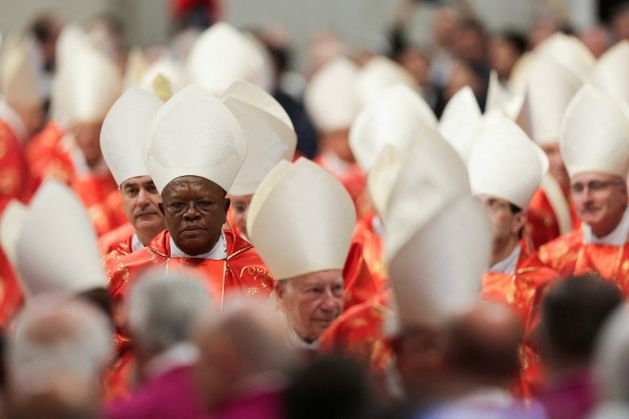Conclave: the chemistry behind the black and white smoke
This week, 133 cardinals have gathered in the Vatican to elect a new leader of the Catholic church. During their deliberations, the only indications of their progress are the regular plumes of smoke wafting from a freshly installed chimney perched on the roof of the Sistine Chapel.
Tradition holds that black smoke indicates the cardinals have not yet agreed on a new leader, while white smoke signals that a new Pope has been elected. But what kind of smoke is it exactly? Let’s take a look at the science.
The tradition of cardinals burning their ballot papers to maintain secrecy dates back to at least the 15th century. However, it wasn’t until the 18th century — when a chimney was installed in the Sistine Chapel to protect Michelangelo’s frescoes from soot — that the resulting smoke became visible to anyone outside the chapel.
At the time, the smoke was not intended as a public signal, but once it was visible, onlookers began interpreting it as an indicator of the voting outcome.
By the 19th century, it had become customary to use smoke deliberately: if smoke was seen, it meant no Pope had been elected, whereas no smoke indicated a successful election. This of course lacked clarity and often caused confusion.
The Vatican eventually sought to clarify matters by formalising the practice of fumata nera (black smoke) and fumata bianca (white smoke). Initially, damp straw and tar were added to the burning ballots. As anyone who has tried to light a damp bonfire knows, wet oily fuel can be difficult to ignite, but once it gets going, it produces plenty of dark smoke.
This is the result of incomplete combustion: the energy from the flames is initially used to evaporate the water, which keeps the fire’s temperature low. As a result, many of the larger molecules in the tar do not fully combust, leading to the production of soot and dark smoke.
However, once the moisture is driven off, the fire burns more efficiently, producing mainly steam and carbon dioxide. At that stage, the smoke diminishes and becomes much lighter.
This fluctuating fumata — combined with the subjective interpretation of its colour — caused considerable confusion, particularly during the 1939 and 1958 conclaves. It wasn’t clear whether grey smoke was closer to black or white, for example.
By the 1970s, the straw method had been abandoned in favour of more controllable chemical mixtures. This has since evolved into an unambiguous method for generating the required smoke signals.
In 2013, the Vatican confirmed that their fumata recipes now consist of a clear black smoke recipe: potassium perchlorate (KClO₄), an “oxidising substance” that provides oxygen to the reaction; anthracene, a hydrocarbon derived from coal tar that serves as a heavy smoke-producing fuel; and sulphur, added to adjust the burn rate and temperature.
The result is a deliberately inefficient combustion reaction, producing a high volume of unburnt carbon particles. This abundance of carbon (soot) makes the smoke thick and black — akin to the smoke you might see from burning oil or rubber, which is rich in carbon-based particles.
Meanwhile, white smoke is produced using a much cleaner fuel mix and a more powerful oxidiser. Potassium chlorate (KClO₃) — even more reactive than perchlorate — ensures a hot, vigorous burn. Lactose acts as the fuel, burning quickly and cleanly into water vapour and carbon dioxide.
The rapid combustion of sugar yields large amounts of gaseous output (steam and CO₂), generating a voluminous white cloud. The final ingredient, pine rosin, produces thick white smoke when heated – releasing tiny droplets and light-coloured ash that appear whitish. It also contains terpenes that burn to yield a pale, visible smoke.
When combined, the oxidising power of potassium chlorate allows the lactose and rosin to burn hot and fast, yielding mostly clean combustion products along with a cloud of vapour and resin particles.
Rather than soot, the smoke contains microscopic droplets and fine solids that are transparent or white. The result is a mixture of steam and white or light gray smoke that contrasts sharply with the dark, carbon-rich black smoke.
Over the years, the papal conclave smoke signal has evolved from an incidental byproduct of burning ballots into a carefully engineered communication tool.
Today, thanks to modern chemistry, the smoke is unmistakable — thick black billows for inconclusive votes, or a bright white plume when a new pope is elected.
Reuters
#Conclave #Cardinals #fail #elect #pope #vote #black #smoke #pours #Sistine #Chapel #chimney








